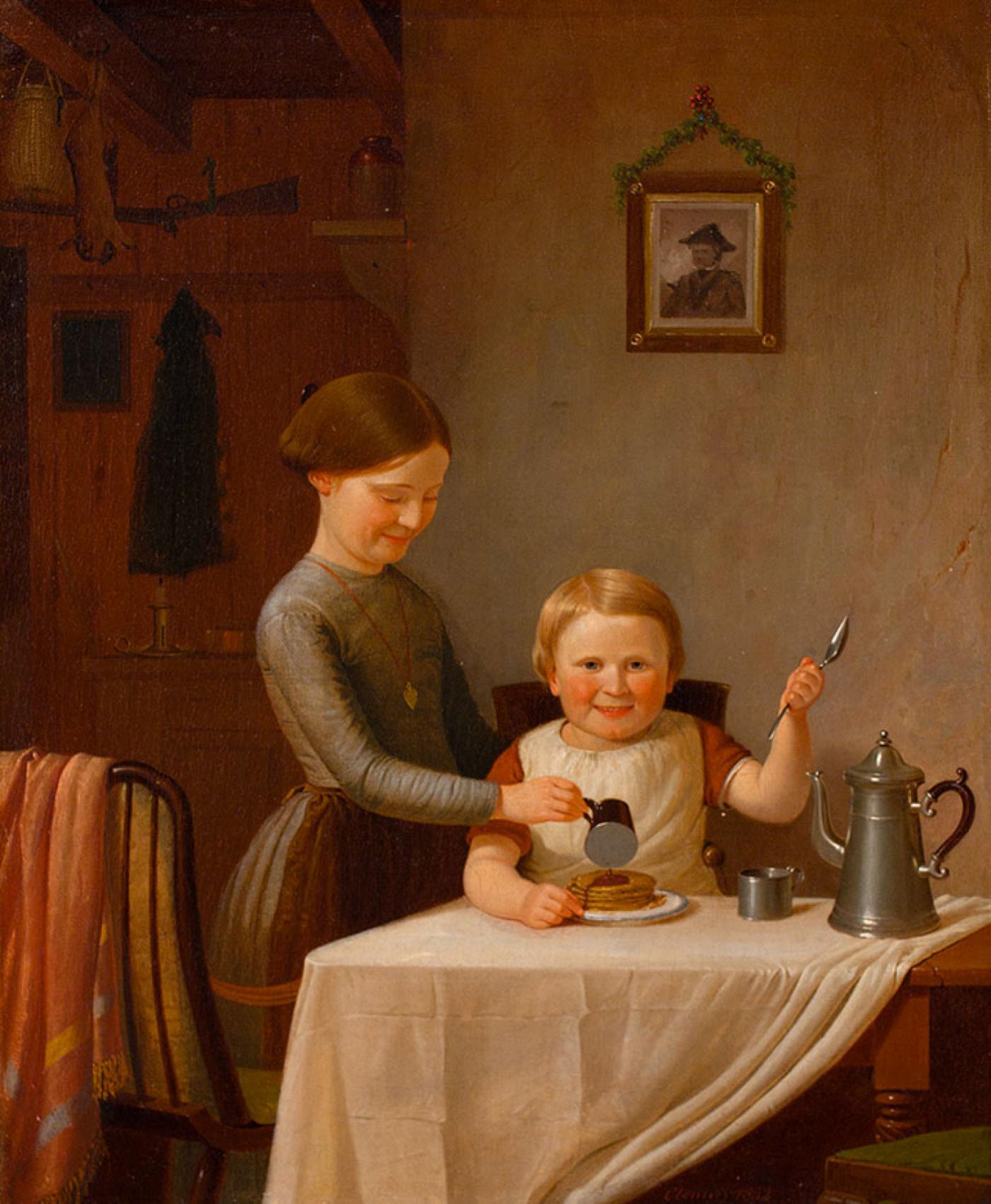A Good Breakfast by James Goodwyn Clonney is an example of American Genre painting. This painting style was popular in the mid 1800s and typically depicts domestic scenes from common folks in America. The Genre painting style was developed because regular people wanted to see themselves reflected in art instead of the noble portraiture or romantic landscapes of the Hudson River School that had been previously popular. There was a desire to reflect family and home life in art.
James Goodwyn Clonney was born in Liverpool, England, but moved to America at a young age. He attended art school and established himself as a skilled miniaturist. He later married an American and became a naturalized citizen. Paintings in the Genre style were small paintings that typically would be hung in a person’s parlor or foyer. His subject matter included domestic scenes, landscapes, and peasant scenes with sometimes amusing undertones.
The domestic scene presented in A Good Breakfast shows a typical room from a common family at that time; we see a rifle mounted on the wall probably used for hunting the rabbit that is stored next to it. A small painting hangs on the wall, possibly a loved one, maybe the father or husband of the family. We see the little boy with his portly, smiling face holding his spoon in the air, delightfully anticipating eating the stack of syrupy pancakes that are placed in front of him. The scale of the boy’s body and head seems rather large in comparison to his slight, petite mother who is caught in a moment of domestic bliss as she serves her son. The boy is the dominant focus of the painting as if the artist is pointing out how he fills the room with his presence; it is a light-hearted take on a doted-upon, well-fed youngster who is clearly the center of their family life.
This painting gives us a glimpse into a simple, domestic scene in American life in the 19th century but still remains relatable to many people today.
- Heidi Werber


 James Goodwyn Clonney
James Goodwyn Clonney